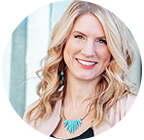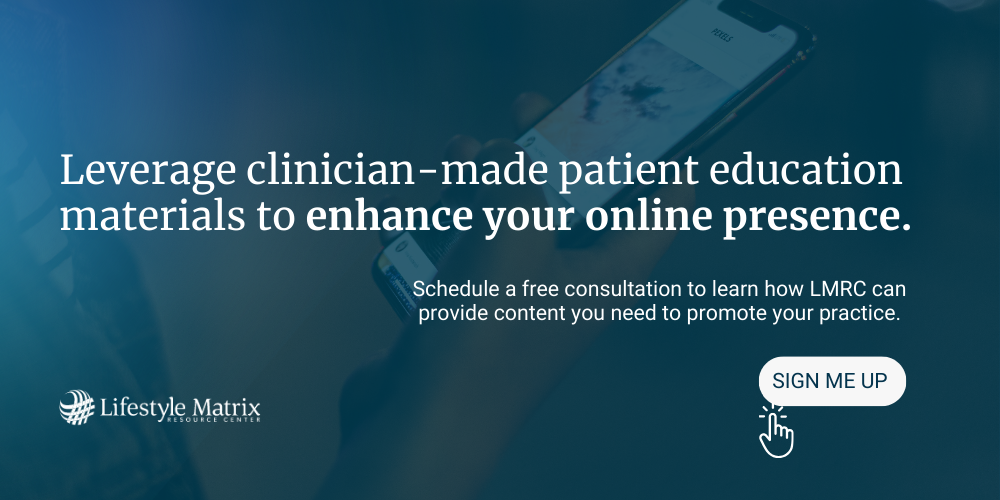There’s no denying it, social media is here to stay. Research reports that worldwide, over 5 billion people use at least one of the popular platforms. That’s nearly 64% of the population! Facebook, Instagram and YouTube are the leading and most popular options; however, TikTok is rapidly on the rise. This means it’s time to go where your future patients are hanging out and use social media to educate and attract them to your services.
Choosing the Right Platform
The truth is people are not only turning to “Dr. Google” for their symptoms, but they are intently searching for YouTube vides or Instagram experts to gain knowledge and solve their problem. You can be their answer. The question is, which platform should you use? And should you use all of them?
Of course, this depends on you! The good news is many of the platforms you can use to repost one to another. If you make a TikTok video, you can repost that as a reel on Instagram or a YouTube short. If you record a longer You Tube video, you can cut it into snippets and then repurpose them on Instagram reels and TikTok or even Facebook.
TikTok and YouTube are generally video only. Instagram and Facebook can be an image/picture or a video. For example, if you have a carousel of images, a future potential patient can swipe through to learn about your “top 10 functional health tips for the best sleep of your life,” and you’ll likely post this on Instagram only. However, if you do a 10-minute video explaining the same topic, you can break it into 10 snippets and slowly post those shorter videos on Facebook, Instagram (as a Reel) and TikTok.
Never Run Out of Things to Say
A big fear with practitioners is, “What do I say?” Remember, your future patients are craving education that solves their problems. Therefore, look at the top problems you help and go from there. Here are some prompts to get you started, whether you do words or quotes over an image or a video:
- “The top 5 high-protein foods to build muscle”
- “My favorite supplement that helps my sleep”
- “The best morning routine to support your circadian rhythm”
- “Research shows XX herb/nutrient does XX for your XX”
- “Why it’s important to support XX”
- “Breaking down how testosterone (or any hormone) works for you”
- “What to do when your XX supplement/medication stops working”
- “The most common symptoms of SIBO”
- “The 3 most common triggers for your headaches”
- “The best supplements to take while traveling”
- “The best ways to test for ovulation and what to do if you’re not!”
As usual, always remember to include a call-to-action in your post or video. For example, do you want viewers to:
- Sign up for a free e-book?
- Schedule for a free 15-minute initial call?
- Register for your free 60-minute webinar on a functional health topic?
- Make an appointment with you or at your clinic?
Say so either at the end of the video or in the caption below the post/video.
Remember, you have an entire bank of content at your fingertips. Leverage patient education materials available through the LMRC membership to enhance your posts or videos and never run out of ways to educate!
Showcase Success Stories
If you’re still feeling overwhelmed or stuck on what to post, remember that your future patients want to know you have helped others just like them. This is where a functional medicine case study, success story and testimonial can help immensely.
Use images, videos, or quotes to highlight transformations, making sure to emphasize the personalized care that went into it. Of course, get their permission first before using any names, videos or photos.
You can also remove any identifying information and showcase lab work to illustrate how you and your clinic work as a practitioner. For example, if you regularly run stool tests, you can do a video or show pictures of the results. “This gentleman in his 50s came in after experiencing heart burn, bloating and constipation for many years. He had been to several doctors including two gastroenterologists who could not find an answer. I ran his stool test and as you can see, these markers are all elevated, which means XX. We are now working on a personalized approach to help him thrive again.”
You can use LMRC’s customizable blog templates and resources to get started and easily share patient success stories.
Build and Engage with Your Audience
The people who watch, comment, and direct message your content are potential future patients. They want to feel seen and heard. This is why responding to comments and messages helps to build that trust and bond for when they are ready to make an appointment. Never give medical care on social media, but gently direct them to your office or website when they ask questions.
If someone comments, “That was so helpful, thank you!” you or your staff can easily respond with “You’re so welcome!” or “I’m so glad it was helpful!”
If someone comments, “I tried magnesium before bed like your video said and it didn’t work. Should I increase the dose?” you or your staff can encourage a redirect. You might say, “Good question, I have a free e-book on magnesium that might help. The link is in my bio or on my website” or even “Unfortunately as I’m not your doctor, so I don’t know. You’re welcome to make an appointment and we can discuss all your specific sleep concerns!”
Live Q&A sessions on Instagram, YouTube or TikTok can also be an easy way to connect with your audience for 15-60 minutes. You can ask for questions ahead of time then read them out and answer them. Or you can answer appropriate questions in the chat. Even if someone asks a personal question, you can answer more generally. In keeping with the magnesium question, if someone asks if they should increase their dose, you could answer about dosing in general, what the RDA is and why it’s usually too low, why some people need more, what causes low magnesium, etc. In this way, you can respond without giving them specific advice. Again, these Q&A sessions help potential future patients get to know, like and trust who you are and what you’re doing.
Consistency Counts
When you think of your social media tactics, remember that to grow and show up in the algorithms, you must post consistently. This could mean daily, twice a day, or once a week (depending on the platform). You and your team may choose a specific schedule to keep things easy. For example:
- Motivational functional health quote on Monday
- Testimonial or functional health case study on Tuesday
- Q&A on Wednesday
- Answering a common question on Thursday in a video or post
- “Top 3 things for XX” on Friday as a video or post
There are wonderful apps that help with design, layout, and scheduling to keep you and your team on task! Make sure to look at your analytics and see what’s working, what’s not working, what topics are popular for your posts, and the demographics of your audience.
The Bottom Line
Remember, you are not alone. Explore all the in-depth resources, templates, and guides from LMRC to streamline your social media content creation and use it as a successful functional medicine marketing engine!

Carrie Jones, ND, FABNE, MPH is an internationally recognized speaker, consultant and educator on the topic of women's health and hormones with more than 20 years in the industry. Dr. Jones graduated from the National University of Natural Medicine in Portland, Oregon where she also completed a two-year residency in women's health, hormones and endocrinology. Later, she graduated from Grand Canyon University's Master of Public Health program. Dr. Jones was one of the first practitioners to become board-certified through the American Board of Naturopathic Endocrinology and currently serves on the board. For several years, she served as the medical director for Precision Analytical, Inc. (DUTCH Test). Dr. Jones is currently the head of medical education at Rupa Health and host of Root Cause Medicine podcast. Dr. Jones serves on Under Armour’s Council on Human Performance and as LMRC's Clinical Expert for the SOS Stress Recovery Program.





